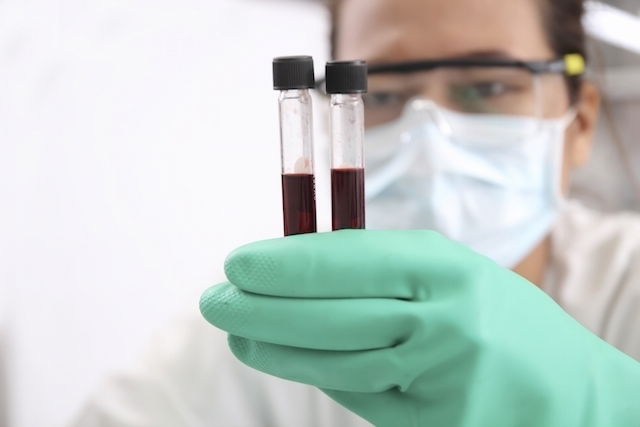What is it:
Arterial blood gases are a blood test that look at several parameters, including blood pH, bicarbonate levels and CO2 partial pressure.
This test is usually ordered for patients admitted to the Intensive Care Unit as a way to assess whether gases (oxygen and carbon dioxide) are being properly exchanged in the body.
ABG's can also be ordered for patients admitted to the hospital with respiratory disease, kidney disease or serious infections to evaluate disease progression or check for treatment efficacy. Results can be used to determine whether patients can safely be discharged home.

Why they are taken
Arterial blood gases can be ordered by the doctor for the following reasons:
- Verify lung function, especially during asthma or bronchitis flare-ups, or with respiratory dysfunction.
- Evaluate blood pH and acidity, which can help to diagnose kidney failure and cystic fibrosis.
- Evaluate metabolic function, which is important to identify cardiac diseases, stroke and type 2 diabetes for example.
- To check lung function following surgery or a transplant.
ABG's can also be ordered in patients presenting with a drug overdose. This test is not commonly ordered and is not usually part of a routine work-up. It is only ordered in more serious clinical situations.
How this test is done
ABG's are done by collecting a blood sample specifically from an artery, either in the arm or leg. This can be very painful, as arteries are located deeper within the tissues in comparison to veins. The blood specimen is taken to the lab for biochemical testing to verify blood pH, bicarbonate concentration and partial pressure of CO2.
Arterial blood gases should not be checked in patients with peripheral artery disease (as blood collection can be difficult), nor in patients with clotting problems or patients who take anticoagulants. In these cases, the doctor may consider ordering other tests to determine diagnoses.
Reference ranges
The normal levels of arterial blood gases are as follows:
- pH: 7.35 - 7.45
- pO2 (partial pressure of oxygen): 80 - 100 mmHg
- Bicarbonate (HCO3): 22 - 26 mEq/L
- PCO2 (partial pressure of carbon dioxide): 35 - 45 mmHg
ABG's can give insight into how the lungs and kidneys are functioning and whether gases are being exchanged properly. Results can indicate whether the patient is in acidosis or alkalosis, which can be respiratory or metabolic in nature.
What results mean
The following table outlines possible ABG results:
This test is not sufficient for reaching a diagnosis, however it can help the doctor confirm suspicions of respiratory, kidney or metabolic disorders. Results can prompt the doctor to order further testing to reach a diagnosis, like x-ray, CT, more blood tests and urine tests.
Difference between arterial and venous blood gases
Arterial blood gases can reveal the exact oxygen levels and can show whether the kidneys or lungs or functioning correctly. This can be beneficial in diagnosing pulmonary, renal and infectious disease.
Venous blood gases, on the other hand, are done as a second option when arterial blood specimens cannot be collected. Venous blood gases can be helpful in facilitating diagnoses like peripheral arterial disease and clotting disorders.






























